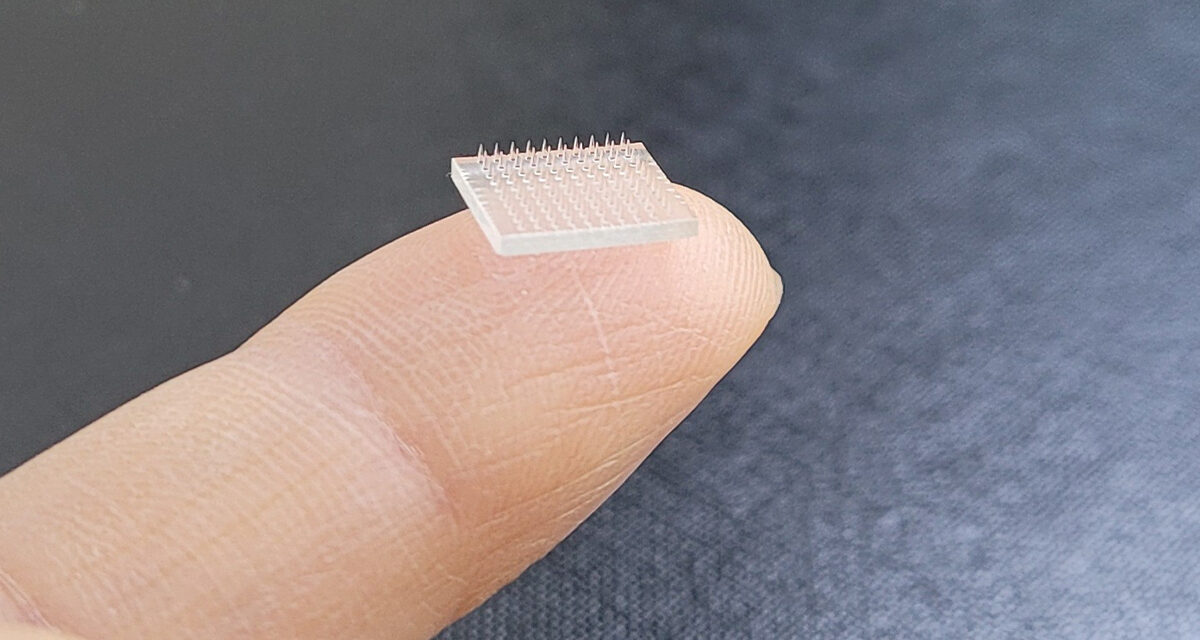A partnership between scientists at UNC and Stanford has led to the development of a 3D-printed vaccine patch. This innovation has the potential to change that way vaccines are administered while providing better protection.
While vaccine patch development is still in its initial phases, with testing only having been conducted on mice, initial data shows the patch provides greater protection than a typical shot.
According to a study conducted by a team of UNC and Stanford scientists, the immune response from the vaccine patch, which sits on top of the skin, was 10 times greater than a vaccine delivered into an arm muscle with a needle jab.
Dr. Jillian Perry, a co-author of the study and a faculty member at UNC’s Eshelman School of Pharmacy, said a vaccine patch is proving to be more effective because of where immune cells are located in the body.
“The reason you want to deliver your cargos for vaccines into your skin, or your intradermal space, is because it’s filled with immune cells,” Perry said. “And those are the cells that you want to reach when you’re delivering vaccine materials. So, when you deliver your vaccine cargo into that space, you’re in the right spot to begin with to hit all those immune cells so that they can traffic to the lymph nodes and really start generating that immune response. However, when you deliver your vaccine cargo into your muscle cells, they have to recruit immune cells into that space, so it’s just a little bit less efficient of a delivery system.”
That patch consists of 3D-printed microneedles lined up on a polymer square – the microneedles just long enough to reach the skin to deliver vaccine. And while the patch is smaller than the pad of your finger, the study found that it generated an antigen-specific antibody response 50 times greater than an injection delivered under the skin.
The vaccine patch is created by first generating a design in a computer program, which is then sent to the 3D printer. Once printed, Perry said the microneedles on the patch are coated with different vaccine formulations that the research team is interested in.
“We do that using a simple dip coat method,” Perry said. “So, we have a solution that we want to put on our microneedles, we take our microneedles and then literally dip it into that solution and take it out and let it dry.”
Perry said the vaccine patch would not only help those who have an innate fear of needles, a main deterrent for some when considering being vaccinated, it will also improve the shelf life and stability of certain vaccines.
“We’ve seen all the issues with the COVID vaccines and then having to rely on the cold chain and the storage,” Perry said. “Especially when trying to get the COVID vaccine out to the world in areas that don’t have access to these cold chain freezers and such.”
The shelf life and storage of vaccines has been an ongoing issue during the COVID-19 pandemic. Both the Moderna and Pfizer vaccine have to be shipped and stored at freezing temperatures and used within 30 days of being thawed or risk being thrown out.
Along with ease of application and better shelf stability, Perry said the process of creating the vaccine patch is also efficient.
“With our microneedles that are 3D printed, the printing process is fairly rapid,” Perry said. “We can print maybe two patches every 10 to 12 minutes, then after that it’s just a dip coat. So, I think it lends this technique to being more scalable and also more universal.”
While microneedle patches have been studied for decades, 3D printing has revolutionized the game, allowing the microneedles to be easily customized to develop various vaccine patches for flu, measles, hepatitis or even COVID-19, according to UNC.
Next steps for UNC’s and Stanford’s 3D-printed vaccine patches include testing in larger primates before eventual clinical trials. Perry said she hopes enough compelling data will be generated in the next two to five years for future use.
Lead photo via UNC.
Chapelboro.com does not charge subscription fees. You can support local journalism and our mission to serve the community. Contribute today – every single dollar matters.







